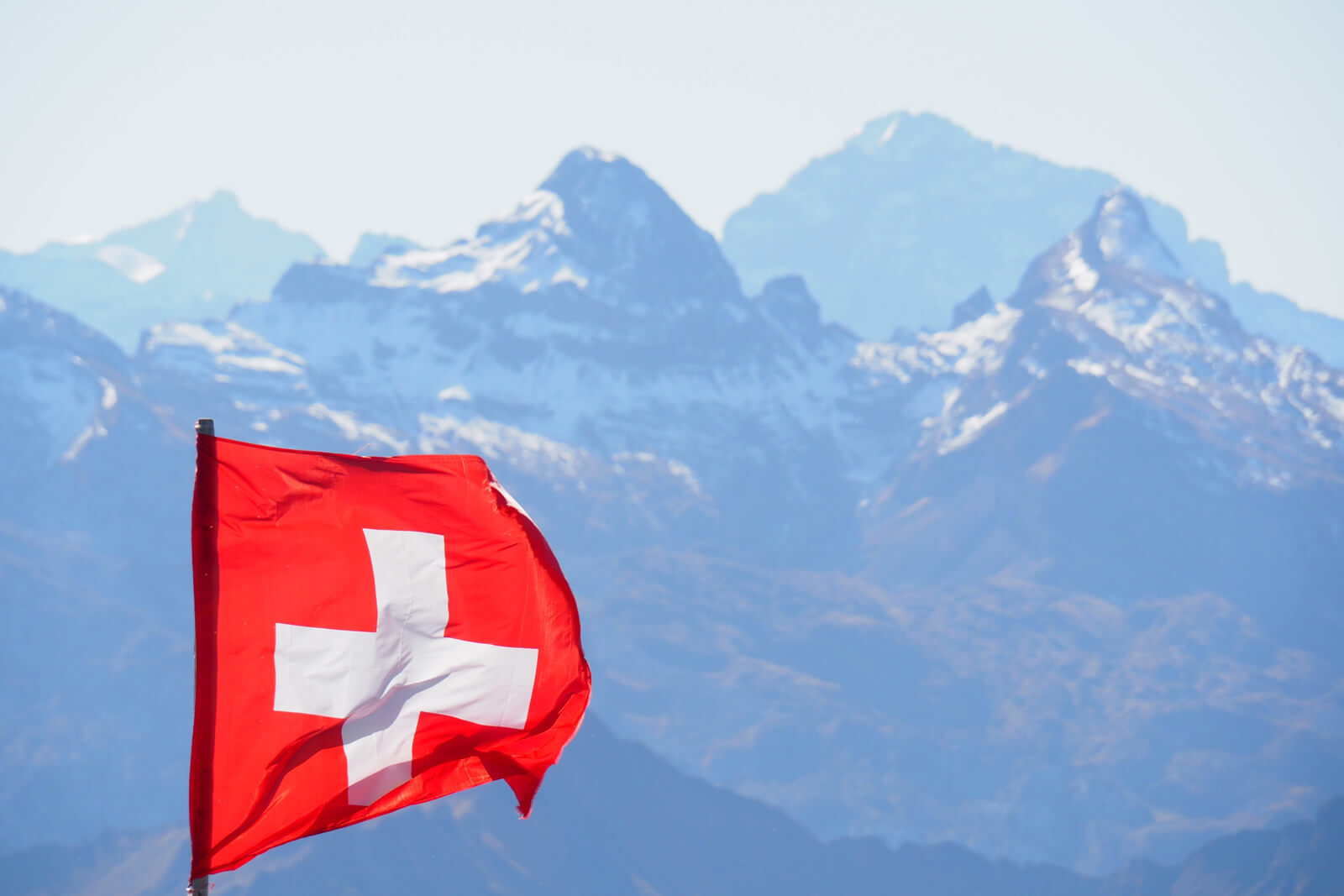
Let's square away the most interesting fact about the Swiss flag: it's the only national flag that's square instead of rectangular.
In more ways than one, the Swiss flag is an icon that is recognized the world over. We can spot it from afar as it flutters on mountain tops or in people’s yards. It dresses the livery of Swiss Airlines planes, making them stand out on tarmacs as far as Singapore. And it stands as a seal for quality when printed on product packaging.
Here are more interesting facts about the Switzerland flag:
The iconic white cross dates back to 1339.
In preparation for the Battle of Laupen in June of 1339, the soldiers of Bern and their allies had a clever idea: to distinguish friends from enemies on the battlefield, they attached two white linen strips to their armors - in the shape of a cross. This idea was later adopted by all soldiers of the Old Swiss Confederacy.
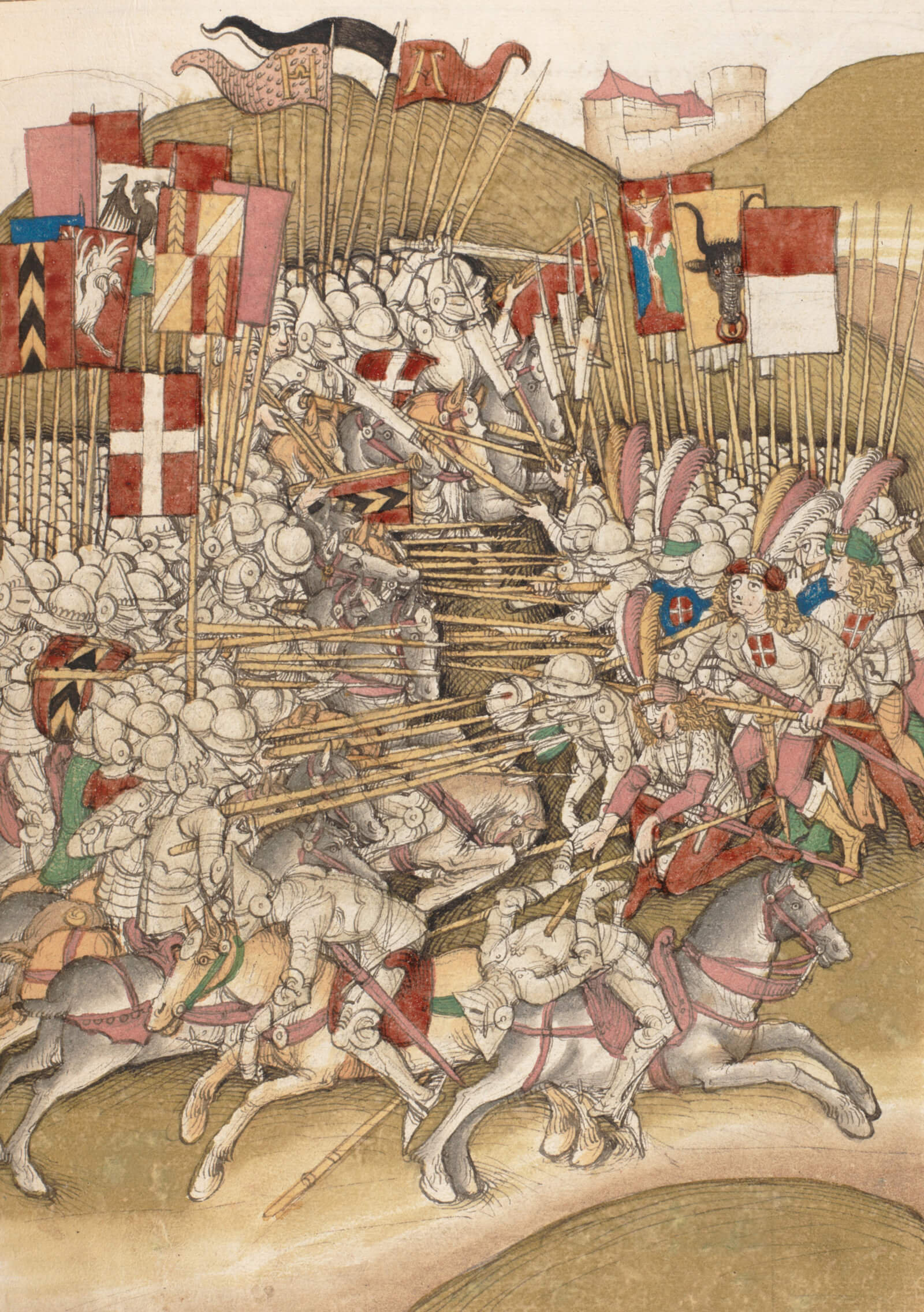
The white cross was once worn on foreign battlefields.
The first records of the Swiss flag are contained in the Luzerner Chronik of 1513. Around this time, Swiss soldiers turned mercenaries as they went to foreign wars under different flags. Still, they would identify themselves to others with a white cross on a background color representing the commander in charge.
Under Napoleon, the official Swiss flag resembled today’s flag of Lithuania.
During the occupation of the Helvetic Republic by Napoleon Bonaparte at the onset of the 19th century, the Swiss flag was green, red, and yellow. Napoleon made the Swiss soldiers carry these colors, signifying the first national flag.
Granted, the colors on today’s flag of Lithuania are in a different order. This far-fetched comparison simply shows that the first Swiss flag looked nothing like the white-cross-on-a-red-square we know today.
Bonus fact: if you visit Bern, pay attention to the street signs throughout the old town: in addition to black and white, they are in the colors green, red, and yellow - just like the coat of arms at the time of Napoleon's invasion.
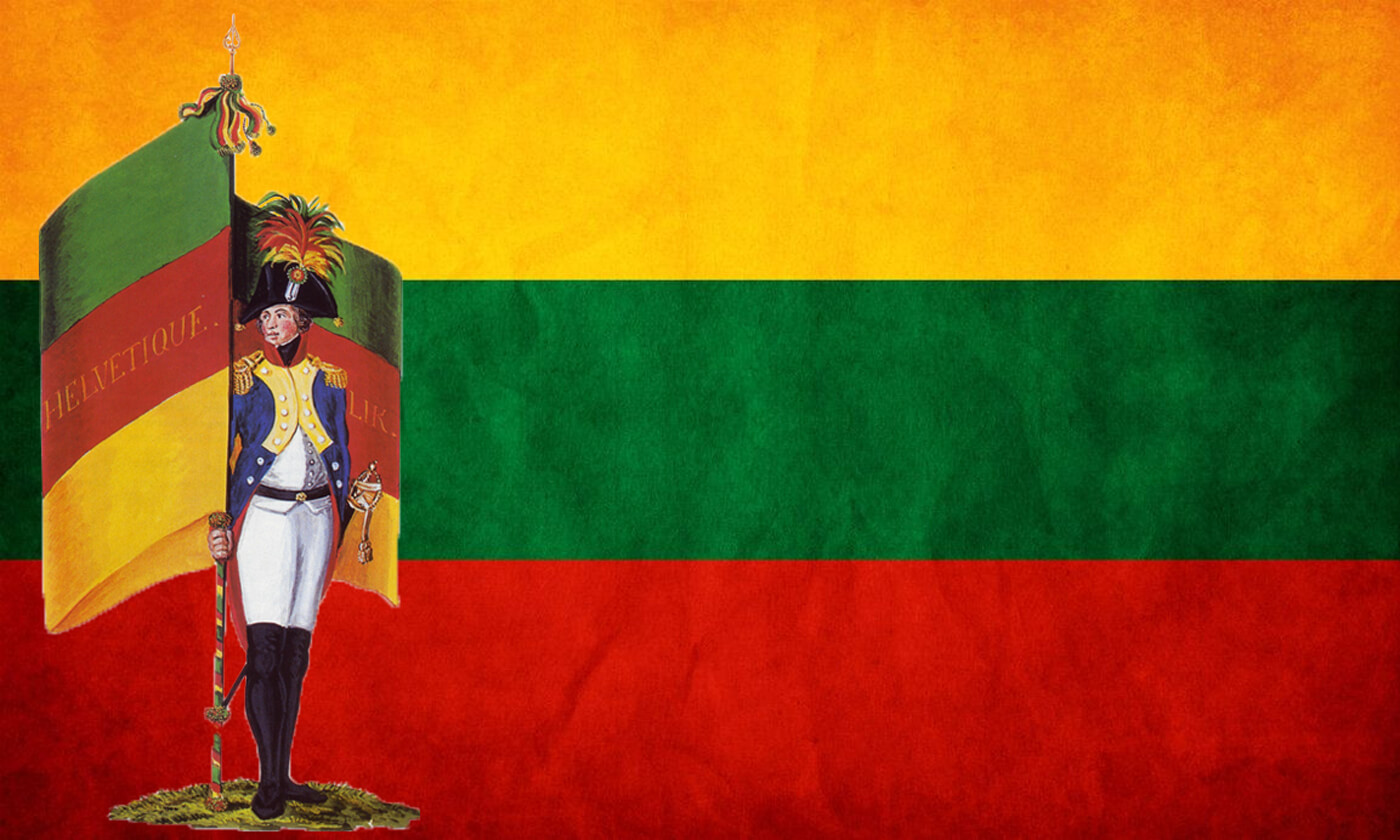
Only in 1840 the flag design we still use today was constitutionally adopted.
Finally, in comes the color red! When one Carl Stauffer wrote the official flag specifications on behalf of the Swiss Confederation, he stated: "The flag needs to be of quality silk, measure four foot five inches squared, scarlet with a white cross in the center."
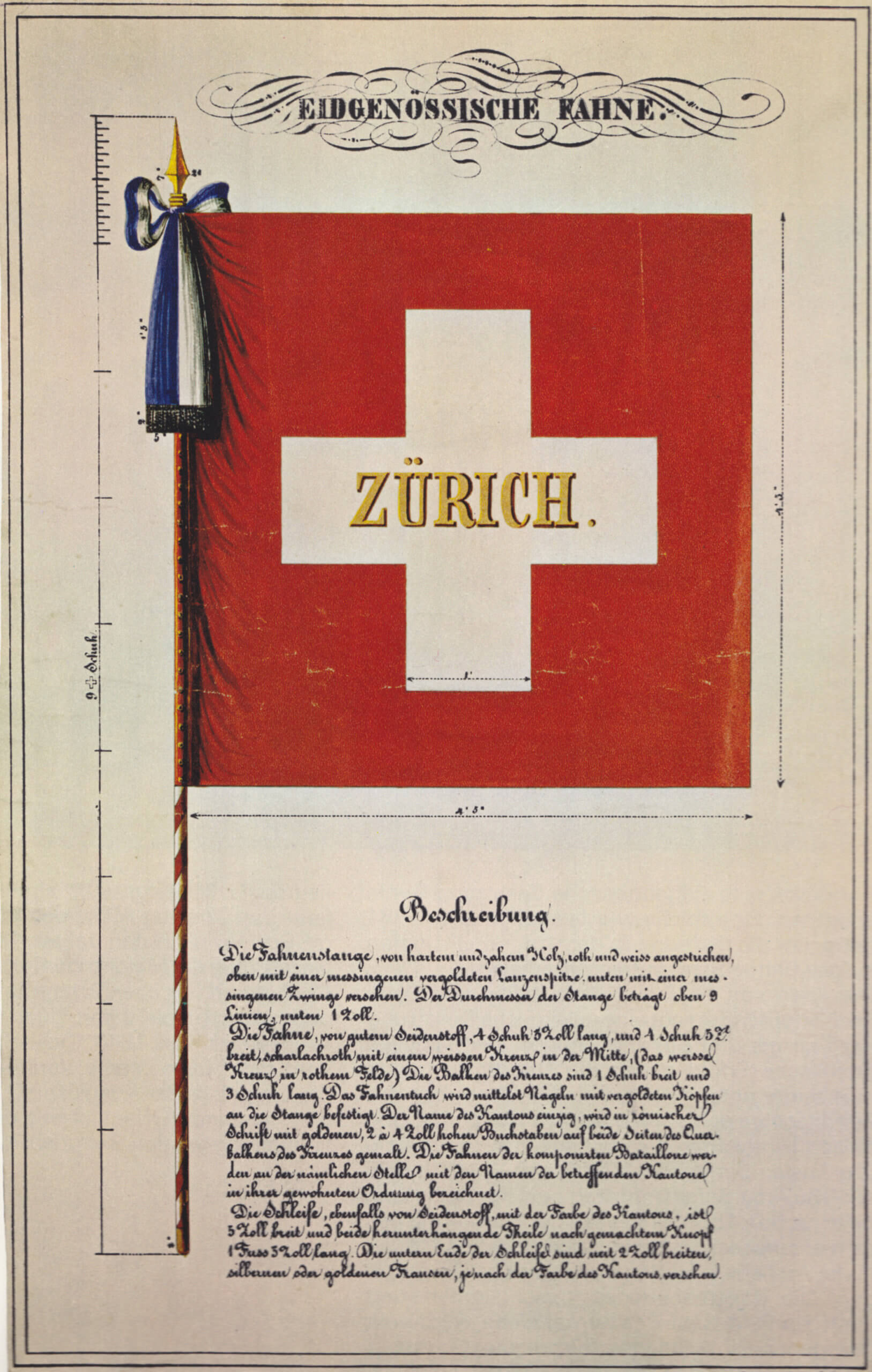
It remains a mystery why the Switzerland flag is red.
Some historians speculate that red might represent the blood of Christ. Others view it as a reference to the former flag of Bern.
What’s for certain is that the Swiss have long adopted the color red as their own. To make a point, author Diccon Bewes has noticed more red shoes on the streets of Switzerland than anywhere else in the world...
For printed Swiss flags, the shade of red is Pantone 485C.
It wouldn't be Switzerland if each detail weren't painstakingly defined. While there is no particular color tone for physical Swiss flags, printed materials are regulated by law.
The shade of red corresponds to Pantone 485C on the color space. That's the same shade used in the corporate colors of McDonald's or the logo of Lego.
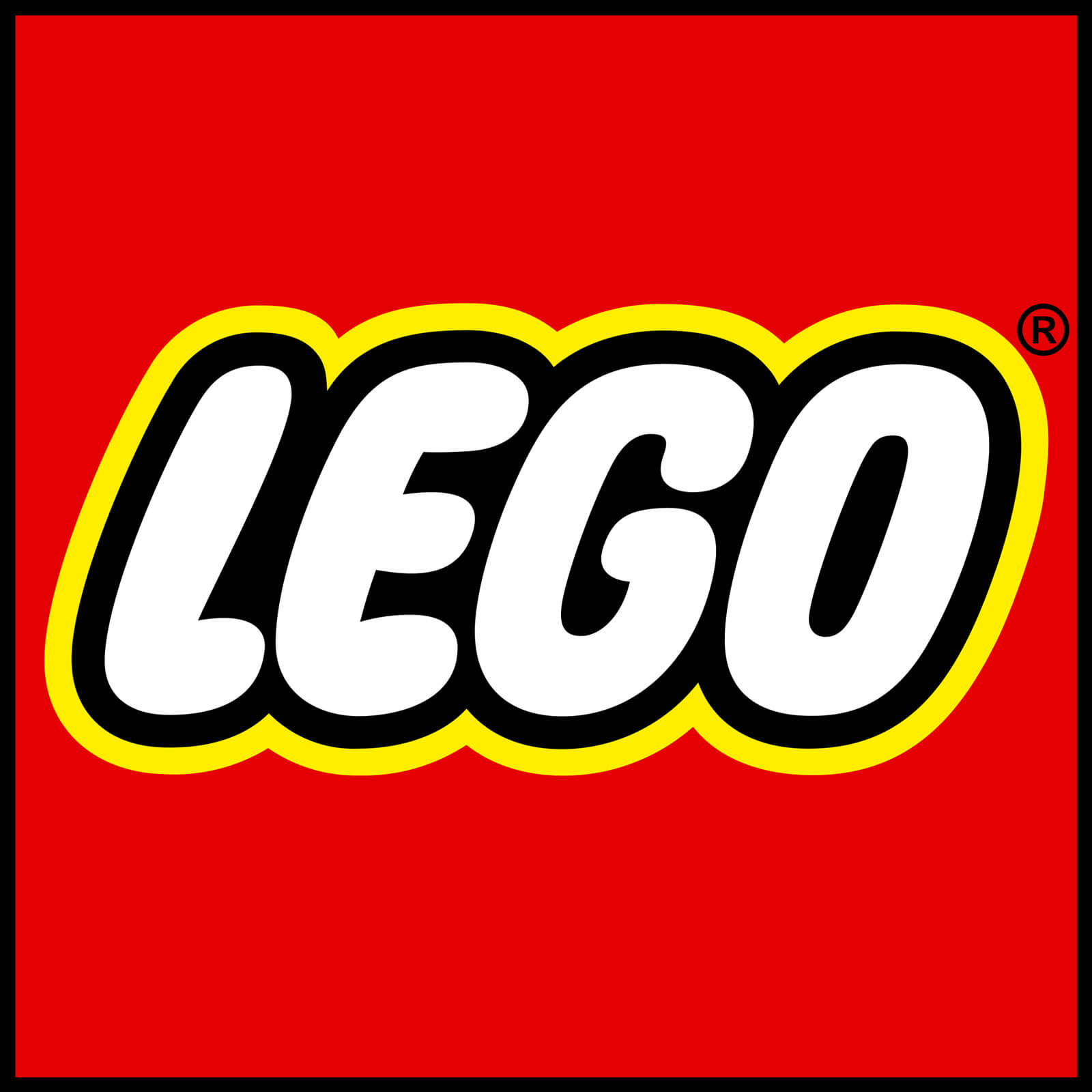
Be there or be square.
At entrances to United Nations headquarters, flags of participating states are displayed. If you take a close look, you will notice something: the only flag that is not rectangular is Switzerland's.
While the square shape goes way back, only the dimensions of the white cross have ever been defined. In 2017, the Coat of Arms Protection Act of 2017 mandated in paragraph 3 that the Swiss flag be square. Except for...
Any vessels owned by Swiss companies have to carry a rectangular Swiss flag.
Going back to World War II in 1941, any ships owned and operated by Swiss private sector firms had to carry a rectangular Swiss flag. The strict 2:3 format (width:length) was defined in the Navigation Act of 1953. The Swiss Maritime Navigation Office mandates that "a certificate of flag registration is required for sailing at sea under the Swiss flag."
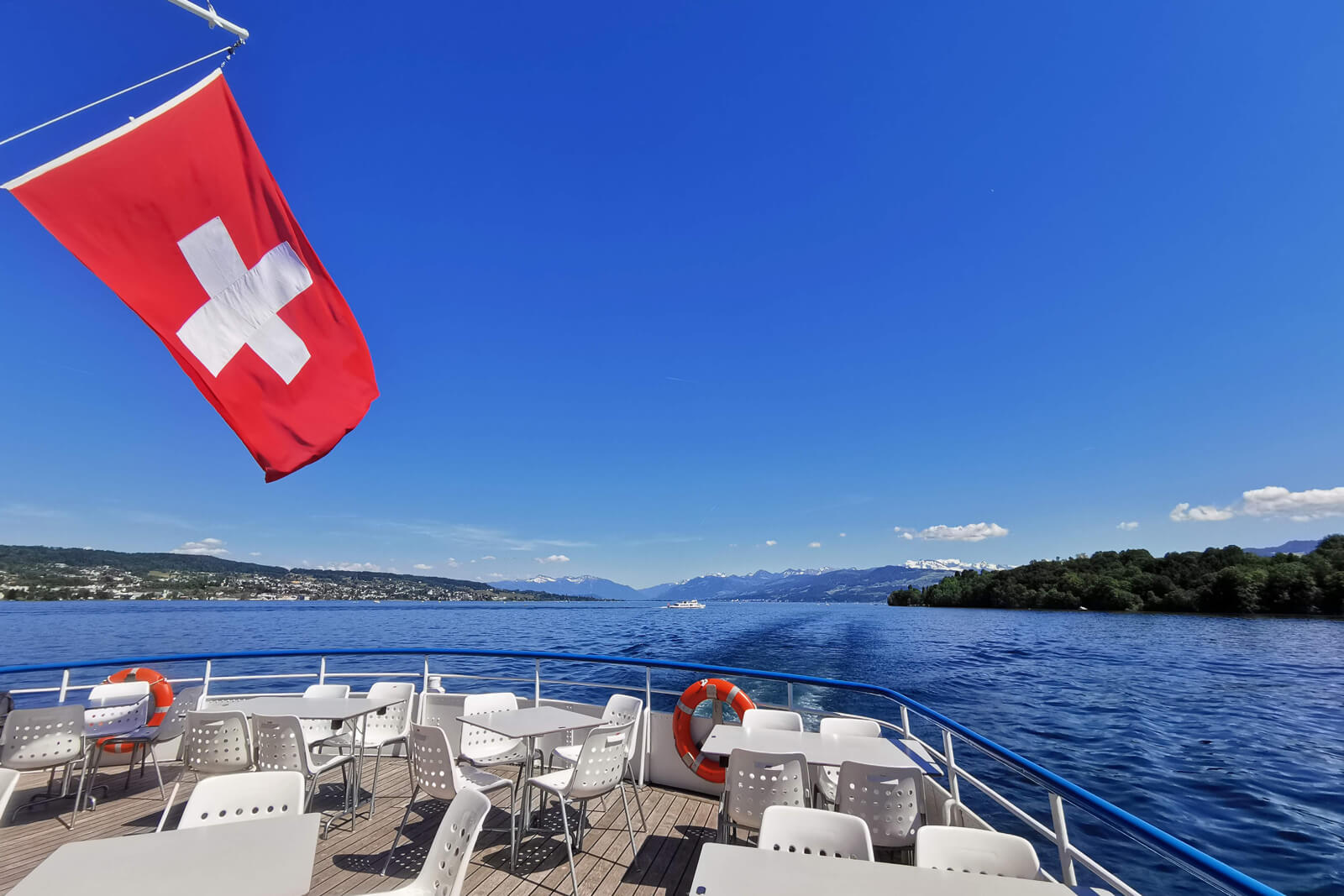
Switzerland is the only state whose coat of arms and flag are identical.
And since the flag is perfectly symmetrical, the Swiss flag is foolproof: it is the only national flag in the world that cannot be hoisted the wrong way.
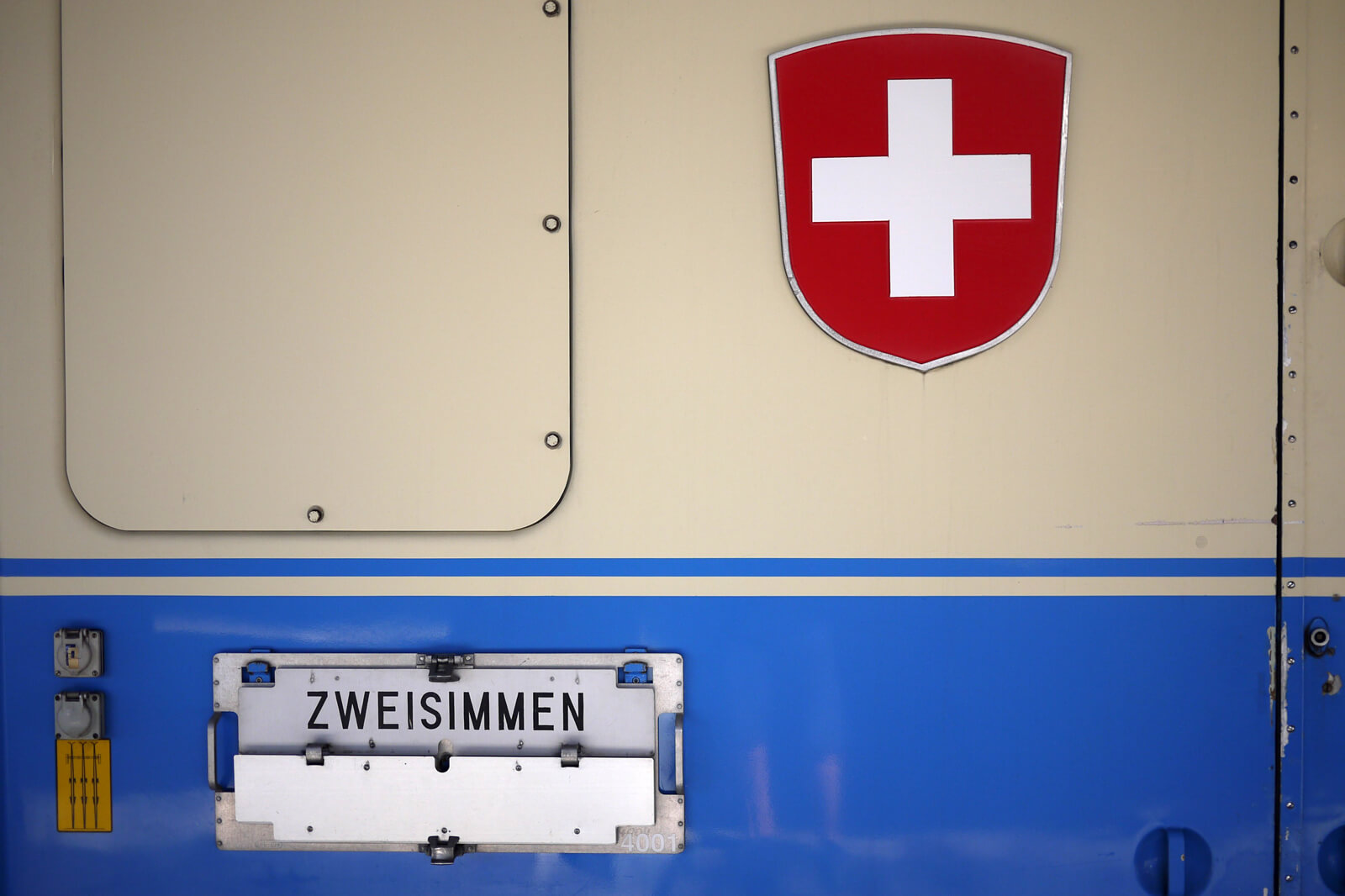
The Swiss flag frequently gets mixed up with the flag of the Red Cross.
In 1865, the International Red Cross established its iconic emblem. The red cross on a white background was inspired by the Swiss flag.
Despite its unmistakable name (“Red Cross”), first aid stations at swimming pools or baseball stadiums often mix up the Red Cross symbol with the Swiss flag.
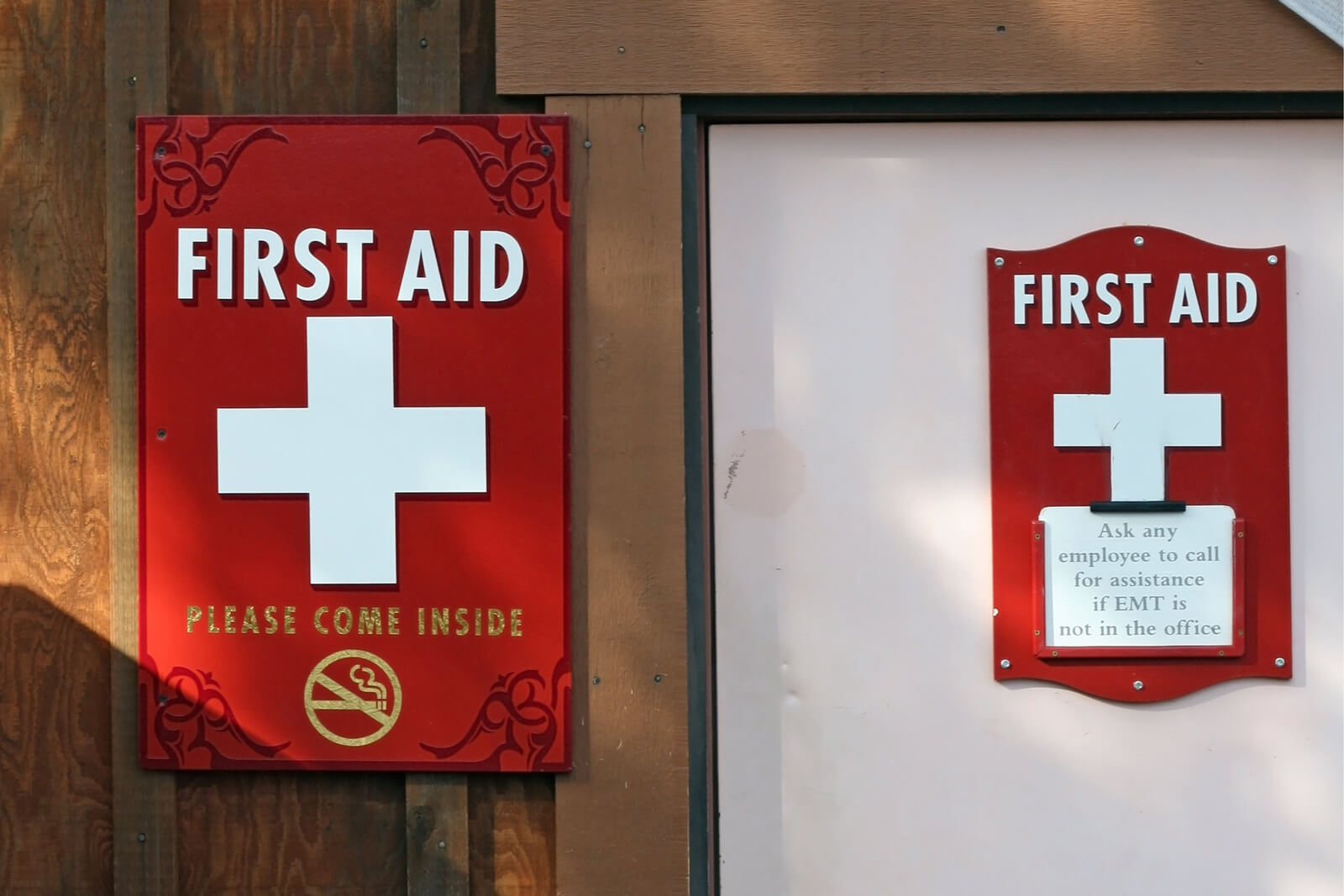
Swiss flag memorabilia and decorations are technically illegal.
Article 28 of the 2013 federal policy covering national coats of arms is pretty clear: applying the Swiss flag on products destined for sale but manufactured abroad is against the law.
Those who sell such products could be fined or charged with imprisonment of up to one year. This is unless the merchandise originated from Switzerland.
But anyone who has ever been to a shop in Switzerland during July must have left with square eyes: it’s all red and white from Swiss flag souvenirs and merchandise. To gear up for the Swiss National holiday on August 1, decorations (from overseas) are going to the masses: coin banks, ashtrays, and even suggestive bottle openers...
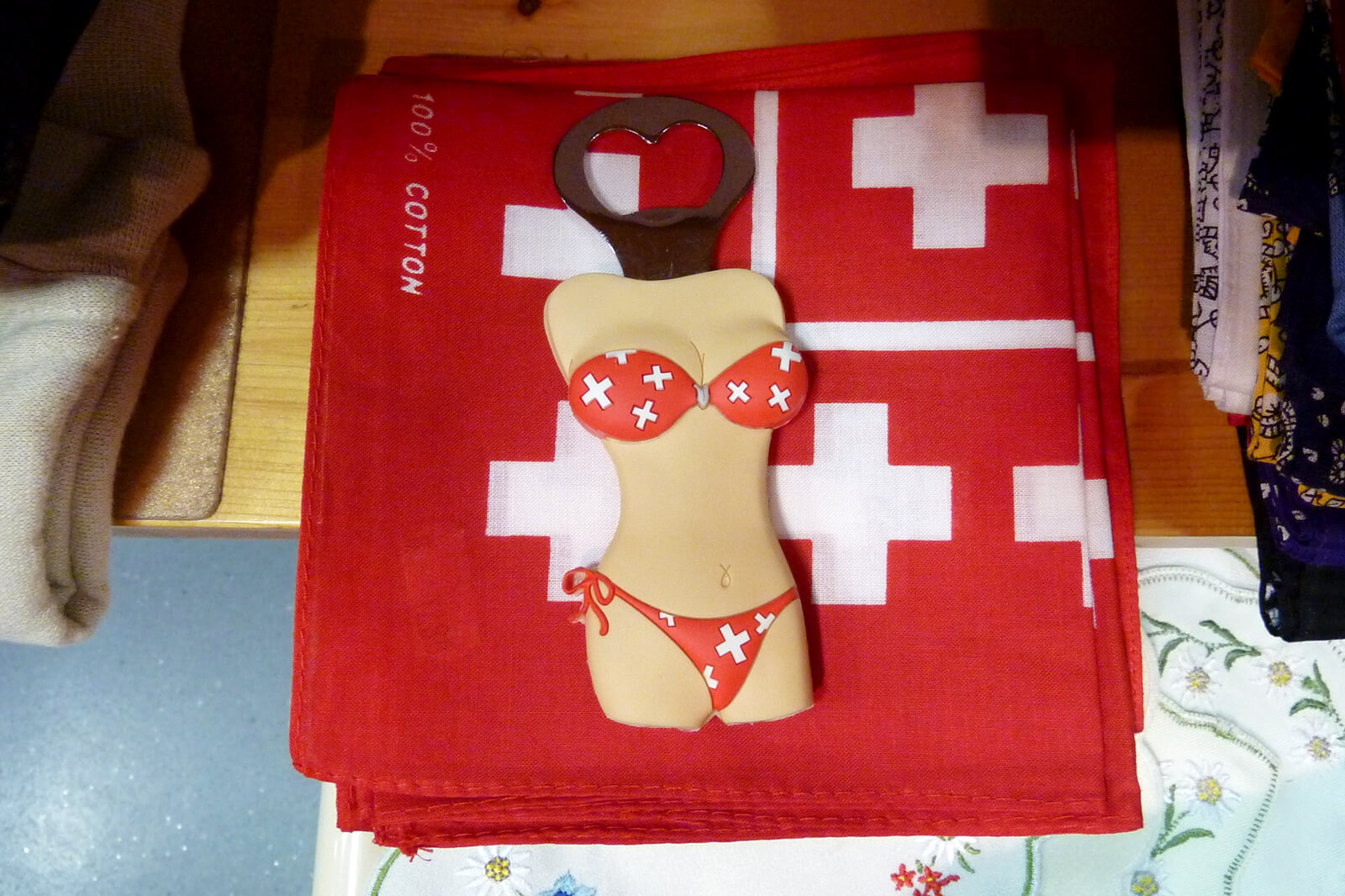
There's even a sports discipline dedicated to the Swiss flag: Fahnenschwingen.
Among the oldest traditions of Switzerland is flag tossing. Dating back to medieval times, this sport requires skilled athletes to master some 99 different twists and tosses - both with their right and left hands!
A popular attraction during folk festivals, such as during the Jodlerfest Lachen pictured below, Fahnenschwingen is a legitimate discipline. During three-minute battles, flag tossers compete against one another by showing off their most difficult whirls.
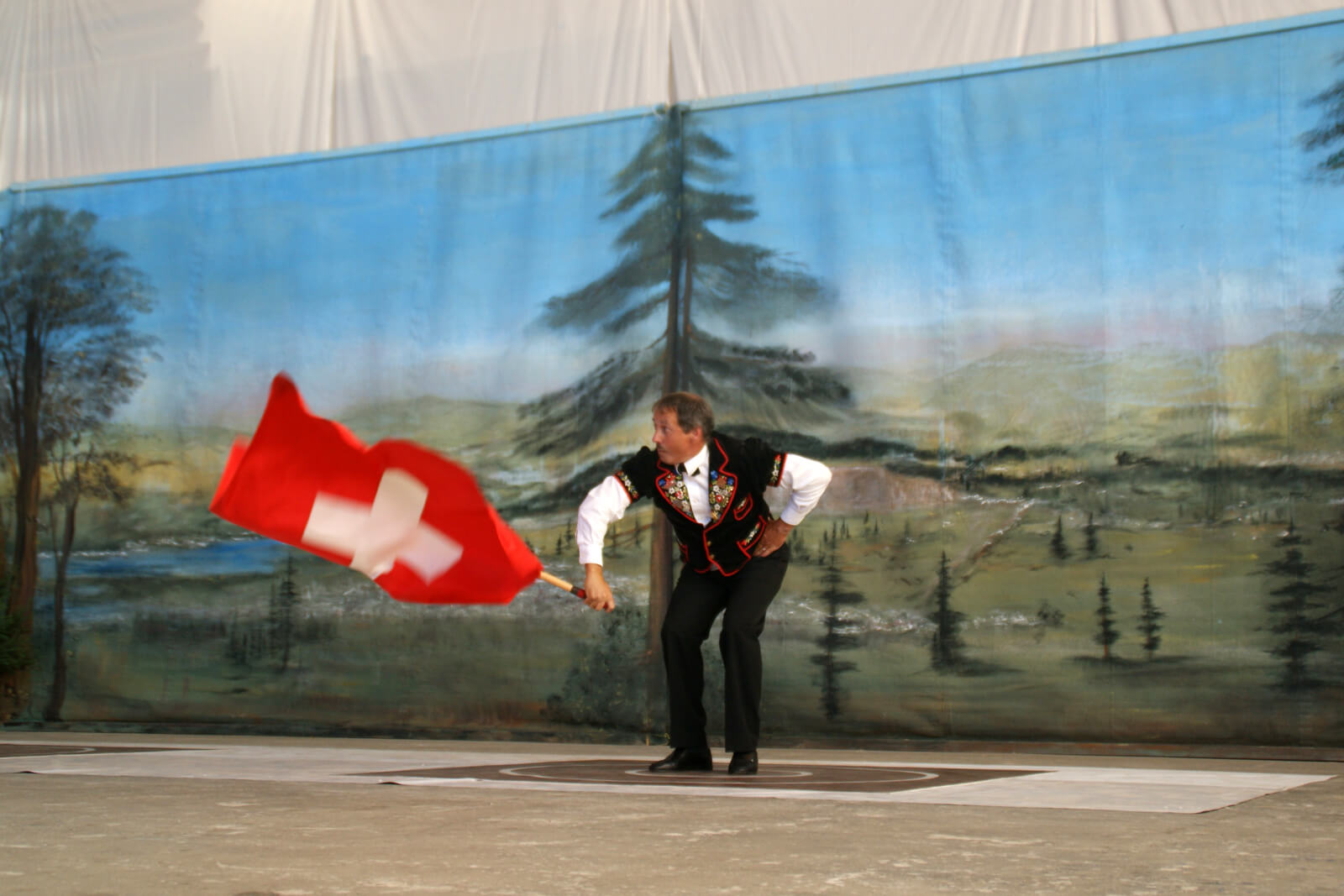
The flag of Switzerland is associated with several positive values.
Ask yourself: what feelings come up when you spot the Swiss flag? Traditionally, it stands for honor and fidelity. The Latin words Honor et Fidelitas were even a part of mercenary flags during the 18th century.
I would argue that the Swiss flag symbolizes neutrality, with Switzerland being the home base for countless non-profit organizations. What values does the Swiss flag represent for you?
Marie-Theres Nadig was the first woman to bear the Swiss flag at the Olympics.
During the 1980 Winter Olympics in Lake Placid, New York, Swiss alpine skier Marie-Theres Nadig represented the Swiss Olympic team. She was the first woman ever to carry the Swiss flag during an Olympic opening ceremony. While Nadig had won two Olympic gold medals in 1972, she would come in third and win bronze in the downhill race.
Only women bore the Swiss flag during the next five Olympic Games that followed in 1984, 1988, and 1992.
If you believe the memes, Roger Federer is said to have cracked an epic joke about the Swiss flag.
"So, Roger, what's the biggest advantage of living in Switzerland?"
"Well, the flag is a big plus."

How big is the Switzerland flag?
Arguably the largest Swiss flag ever was once projected onto the Matterhorn.
On March 25, 2020, a Swiss artist projected a gigantic Swiss flag onto the iconic mountain. During the Corona pandemic, the nightly light installations of Gerry Hofstetter sent inspiration from Zermatt into the world. In case you were wondering, there is no hoisted Swiss flag on top of the Matterhorn...

Another huge Swiss flag is displayed on Mount Säntis every Swiss National Day.
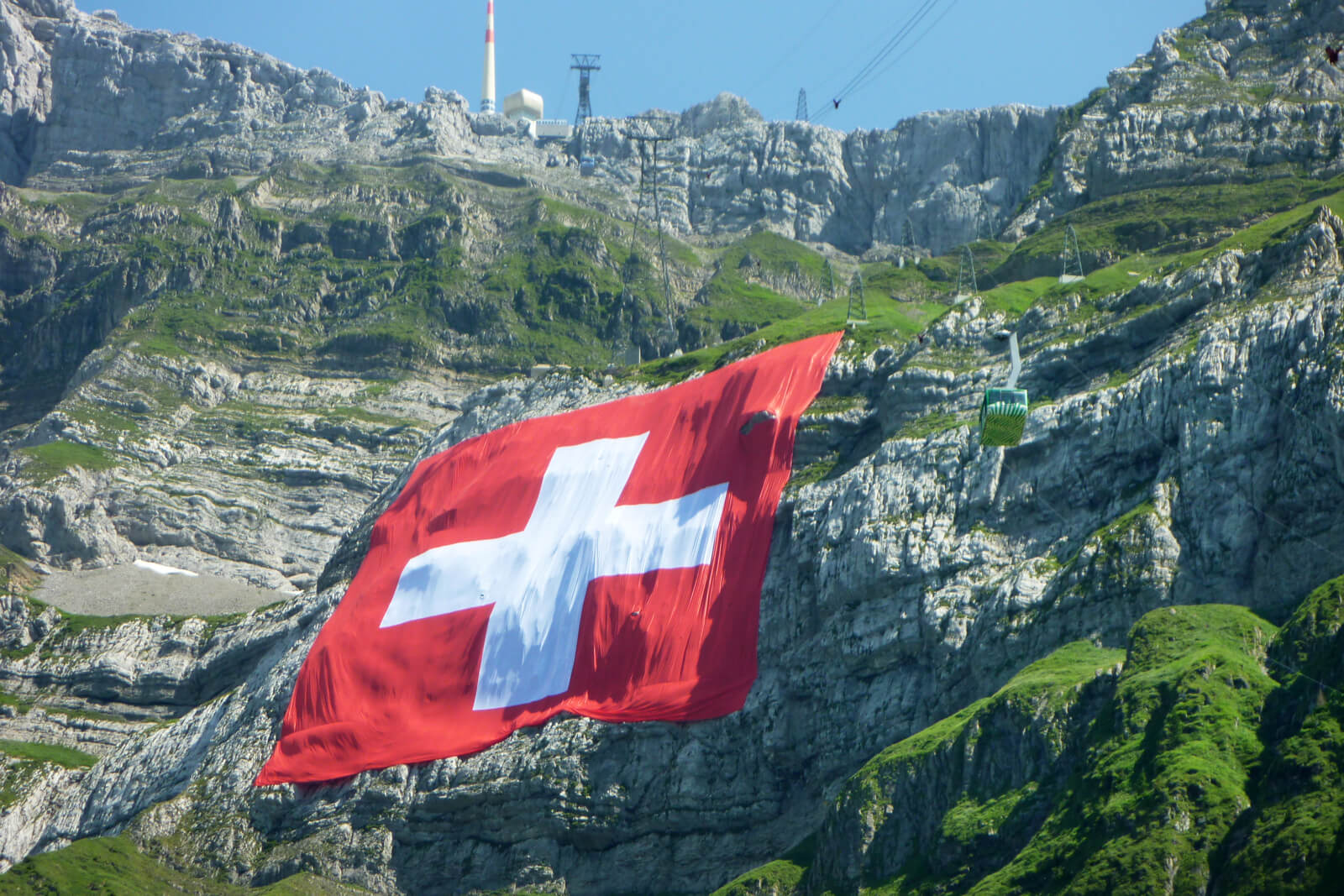



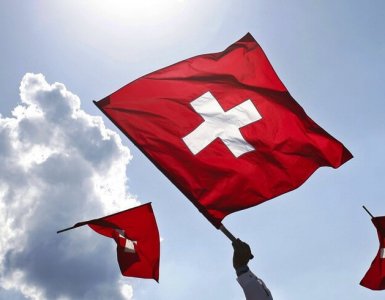

Add comment